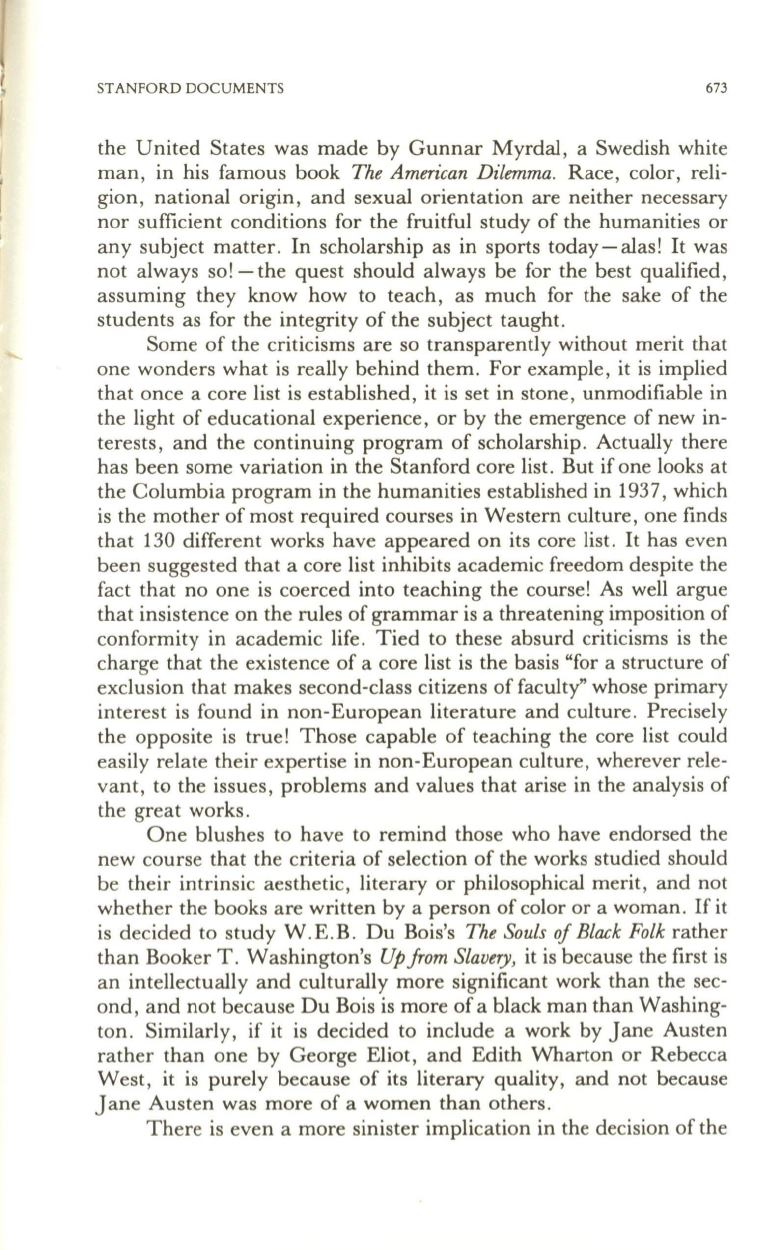
STANFORD DOCUMENTS
673
the United States was made by Gunnar Myrdal, a Swedish white
man, in his famous book
The American Dilemma.
Race, color, reli–
gion, national origin, and sexual orientation are neither necessary
nor sufficient conditions for the fruitful study of the humanities or
any subject matter. In scholarship as in sports today-alas! It was
not always so! - the quest should always be for the best qualified,
assuming they know how to teach, as much for the sake of the
students as for the integrity of the subject taught.
Some of the criticisms are so transparently without merit that
one wonders what is really behind them. For example, it is implied
that once a core list is established, it is set in stone, unmodifiable in
the light of educational experience, or by the emergence of new in–
terests, and the continuing program of scholarship . Actually there
has been some variation in the Stanford core list. But if one looks at
the Columbia program in the humanities established in 1937, which
is the mother of most required courses in Western culture, one finds
that 130 different works have appeared on its core list. It has even
been suggested that a core list inhibits academic freedom despite the
fact that no one is coerced into teaching the course! As well argue
that insistence on the rules of grammar is a threatening imposition of
conformity in academic life. Tied to these absurd criticisms is the
charge that the existence of a core list is the basis "for a structure of
exclusion that makes second-class citizens of faculty" whose primary
interest is found in non-European literature and culture . Precisely
the opposite is true! Those capable of teaching the core list could
easily relate their expertise in non-European culture, wherever rele–
vant, to the issues, problems and values that arise in the analysis of
the great works.
One blushes to have to remind those who have endorsed the
new course that the criteria of selection of the works studied should
be their intrinsic aesthetic, literary or philosophical merit , and not
whether the books are written by a person of color or a woman.
If
it
is decided to study W.E .B. Du Bois's
The Souls of Black Folk
rather
than Booker T. Washington's
Upfrom Slavery,
it is because the first is
an intellectually and culturally more significant work than the sec–
ond, and not because Du Bois is more of a black man than Washing–
ton. Similarly, if it is decided to include a work by Jane Austen
rather than one by George Eliot, and Edith Wharton or Rebecca
West, it is purely because of its literary quality, and not because
Jane Austen was more of a women than others.
There is even a more sinister implication in the decision of the


